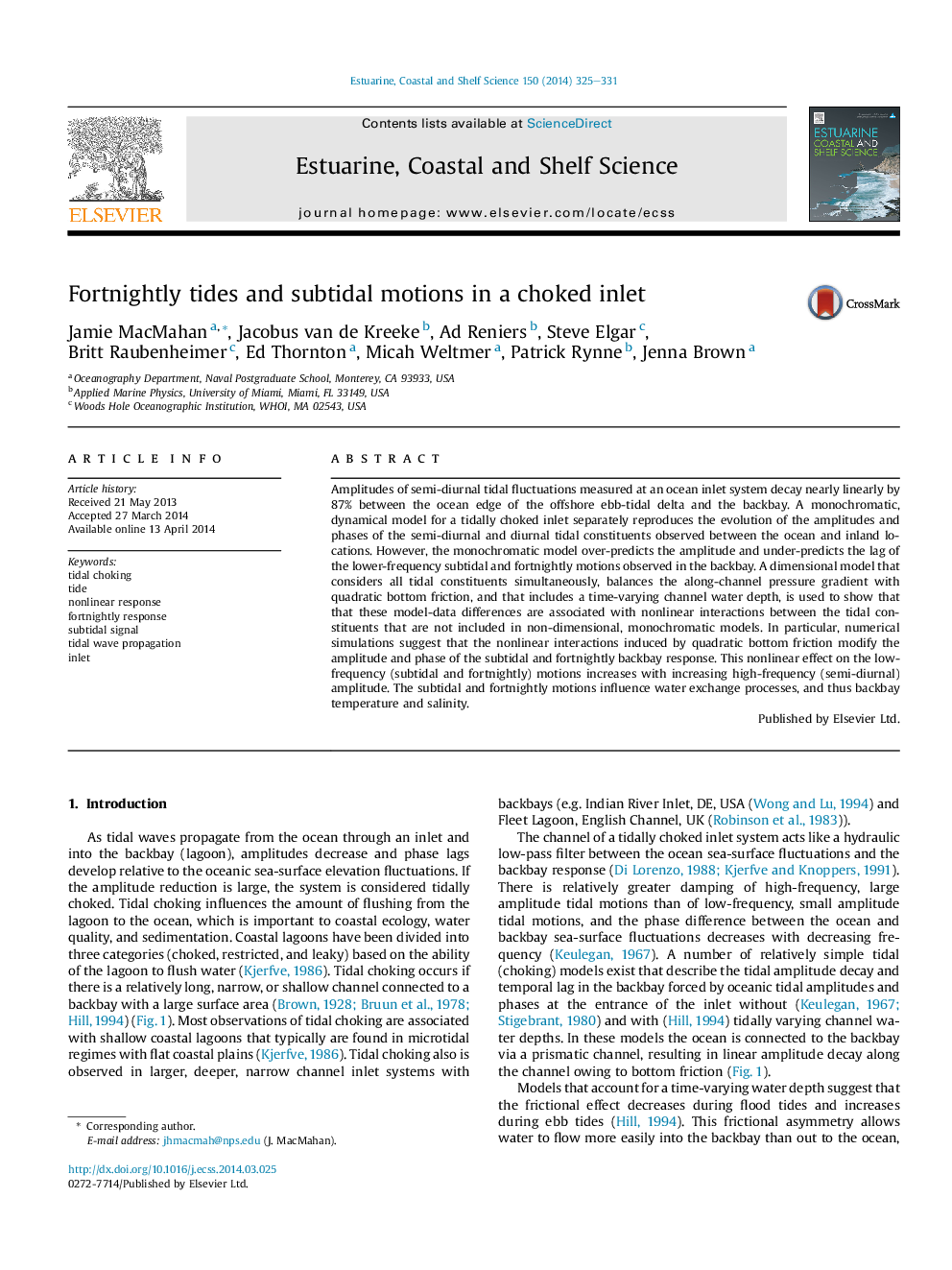| Article ID | Journal | Published Year | Pages | File Type |
|---|---|---|---|---|
| 4539639 | Estuarine, Coastal and Shelf Science | 2014 | 7 Pages |
Amplitudes of semi-diurnal tidal fluctuations measured at an ocean inlet system decay nearly linearly by 87% between the ocean edge of the offshore ebb-tidal delta and the backbay. A monochromatic, dynamical model for a tidally choked inlet separately reproduces the evolution of the amplitudes and phases of the semi-diurnal and diurnal tidal constituents observed between the ocean and inland locations. However, the monochromatic model over-predicts the amplitude and under-predicts the lag of the lower-frequency subtidal and fortnightly motions observed in the backbay. A dimensional model that considers all tidal constituents simultaneously, balances the along-channel pressure gradient with quadratic bottom friction, and that includes a time-varying channel water depth, is used to show that that these model-data differences are associated with nonlinear interactions between the tidal constituents that are not included in non-dimensional, monochromatic models. In particular, numerical simulations suggest that the nonlinear interactions induced by quadratic bottom friction modify the amplitude and phase of the subtidal and fortnightly backbay response. This nonlinear effect on the low-frequency (subtidal and fortnightly) motions increases with increasing high-frequency (semi-diurnal) amplitude. The subtidal and fortnightly motions influence water exchange processes, and thus backbay temperature and salinity.
